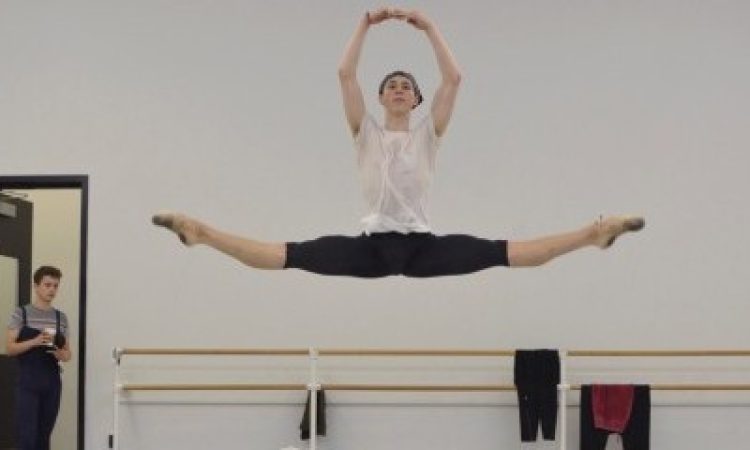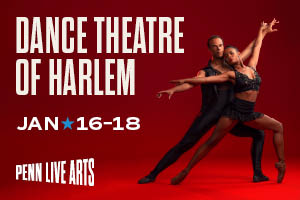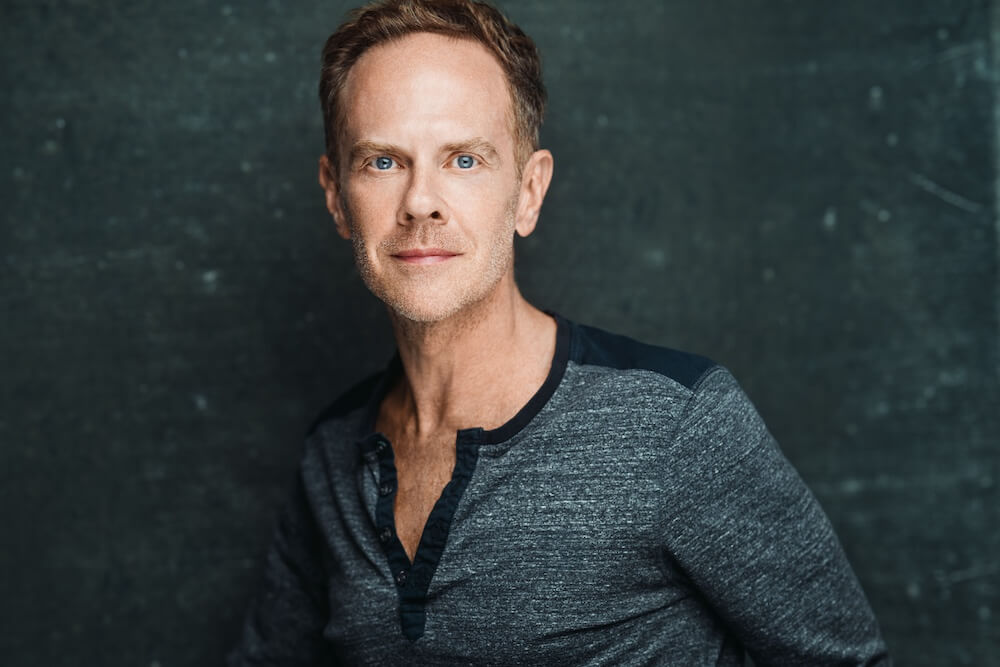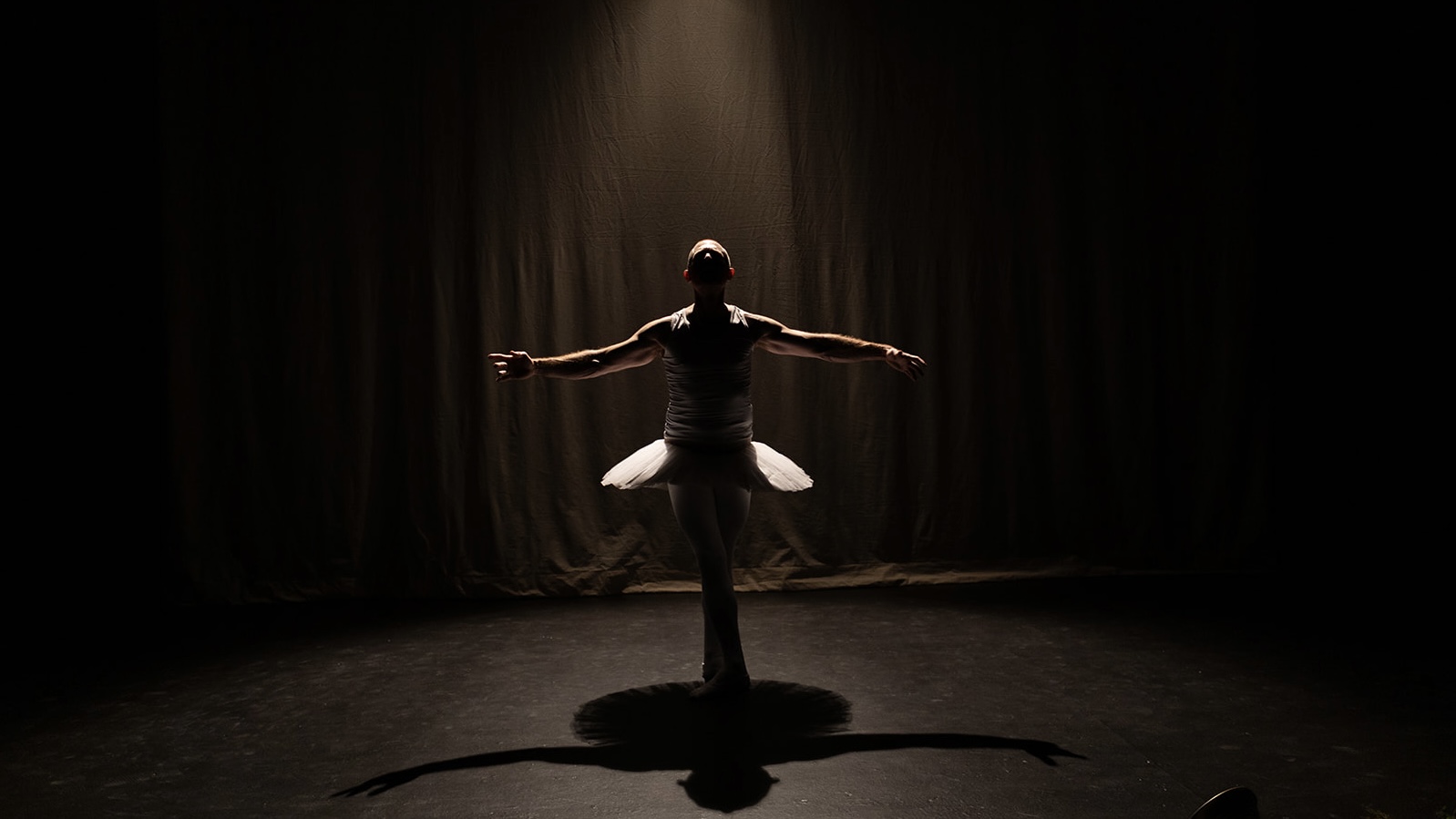I’m following Pennsylvania Ballet as both confused personal quest and warped ethnographic fieldwork. Personal quest: might I extract The Ballet, as a physical practice, from the normalizing, born-of-the-aristocratic, cultural establishment? Ethnographic mission: how can a ballet company survive in 2016? Both economically and socially? How does this culture persist? What does its protected species cost to other dance species? I suspect ballet does a thing perpetually re-weaving itself into the mainstream cultural ether with its tethers to heteronormativity, Whiteness, and a predictability of a theater experience. The thing it does is simultaneously also about magic and dreams.
One weekend through the run of Cinderella,* Jack Thomas and So Jung Shin in rehearsal remind me of the buoyant patterns and spiraled peaks of meringue in the making. Thomas is totally stoked while practicing his big air jumps. He reminds me of the power of being nineteen. Most of these dancers look like and are teenagers. Thomas tells me that he and his partner Shin (one of the six sets of Cinderellas and Princes) both joined the company this year, at the same time. The storyline of Cinderella lines up with these young performers’ dance careers. From Wikipedia: “Cinderella . . . is a folk tale embodying the myth-element of unjust oppression/ triumphant reward.” Thomas links his experience playing the Prince with his career rises and falls: “I’m living my dream, but I’ve not quite gotten what I want. This is a step there. We’re getting closer to that moment, to that pure beauty of what we want, to that satisfying feeling.”
As Thomas practices, he has the spark of a Parkour runner attempting and re-attempting, over and over, until a deal is struck with gravity that makes it all suddenly so natural. Thomas performs like an Olympic snowboarder—scooping air with an outrageous playful prowess. I tell him this.
“YES!” Thomas fist pumps, grinning under his curls. The pink exertion of rehearsal flushes back to his face. “I’m so inspired by snowboarding and skateboarders! With skateboarding, you don’t see guys who are, like, ‘we had to do it because our parents said you should do this.’ They love to do it. I don’t want to come into work every day and feel I have to work because I have to make it. I want to come into work and work hard because I love what I do. I want to get these jumps because I love dancing, and I try to interpret that in my dancing. I want people to go home and remember it. Just like you do with [Pro snowboarders] Shaun White, Mark McMorris, Sage Kotsenburg. One of my favorites is Sage Kotsenburg. The thing I love about him is his presence when he shows up at the games. He’s really there to have a good time. It’s the same when I go out on stage. I want people to feel the full emotion on the stage. That’s what I’m trying to conquer.”
Jack tells me, “No one is, like, ‘feel this or feel that.’” Rather, everything he needs to fulfill the character of the Prince is prescribed in the embodiment of the male technique. The male bodies in ballet are programmed for outwardly, overtly risky displays of power, height, lifting, and tossing. While the training and performance of female ballerinas is one of the most extreme physical trainings in the world, the classical ballet vocabulary for women is not about displays of force. It’s about hidden exertion, displays of lightness, levity, flexibility, and supple elegance.
I ask Thomas if he feels like he is acting. He tells me, “Feeling the character—what it feels like to touch her hand for the first time onstage—this brings me into the role. I get onstage and I’m nervous. Here’s my partner, and she looks amazing; I see her, and I’m like, ‘she’s beautiful.’ I bring a little of myself into that.” He explains, “It’s almost like there’s no audience, I’m in a dream. I become somebody else, this guy who is seeking love, who is not quite satisfied with what’s going on in his life.”
Jack qualifies his statements with “almosts.” He skirts around claiming a direct correlation with the Prince, or with a theater actor. He speaks in second person, as so many of us do, explaining his childhood training: “You are taught the moves as the Prince would do them.” I wince internally. I was never taught the movements the way the Prince would do them because I was a girl. I was also never explicitly forbidden either; I found other things to do.
I am formulating a question in my head: “Does the ballet, as an institution, by re-telling these heteronormative, relationship-escalator stories, affect how you understand yourself or the world?” Then I fear it’s perhaps a cruel question for a nineteen-year-old working his ass off.
How about this hypothesis: There are two major myths of dance in normative Western culture. The first is the American dream/Protestant ethic of hard work plus piety/God/luck equals rise to the top. We see this in Cinderella, in the unjust oppression/triumphant reward theme. We also know this version from its Hollywood manifestations in “dance” movies Dirty Dancing, Flashdance, Center Stage, even Breakin’. The second category is an inverse of the first: The dancer who becomes bewitched by dance, and falls into evil: The Red Shoes, Black Swan; a woman is bewitched by dance, by embodiment and sensuality, leading to her ultimate demise.
Thomas is interested in freedom inside of—in his words—“the blueprint of ballet.”
I recognize and value a feeling in rehearsal: a drive to GO HUGE OR GO HOME. It is a defiant belief in stories and magic, the grand trimmings of Big Theater, and never taking “no” for an answer. I did not expect to feel this here. I expected the authoritarian power structures of ballet’s physical training, the dark side of discipline, the never-good-enough-ness. It’s not that at all; it feels more like fancy summer camp. In part, this is because of a big age jump between the young dancers and the people in charge. There are a few hip older counselors floating around, like James Ihde, who has danced with PAB since 1993. There are also many more people of color here than the whitewashed billboards around town suggest. The summer-camp feeling, and the delight in the grand storytelling, is powerful, healing. It’s not the story of Cinderella itself, it’s the embodiment of imagination and tale-spinning that is doing powerful work through these disciplined bodies. I think we need invested storytellers and storytelling. And, which and how many stories we tell reverberates through our cultural electrons. What strikes me about watching Thomas is the sense of defiant freedom in his physical practice so similar to movement cultures that emerged as a form of resistance, as the resilience of creativity.
*For another thINKingDANCE take on Cinderella, see Whitney Weinstein’s “Fading Dreams in PA Ballet’s Cinderella”.






